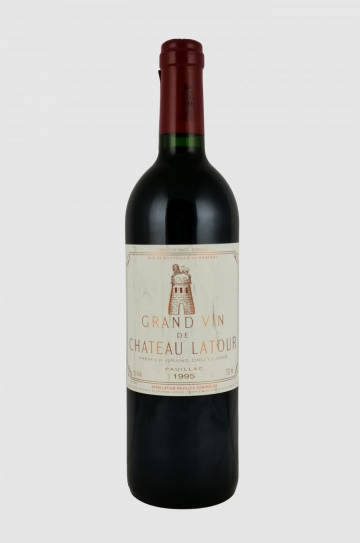Availability:
In stock
SKU
18bd74f2-ae15-44f1-b7fb-f774c6e20adb
Chateau Latour Pauillac - Grand Vin 1995
Château Latour is one of Bordeaux's – and the world's – most famous wine producers. It is situated in the southeast corner of the Pauillac commune on the border of Saint-Julien, in the Médoc region. Rated as a First Growth in the 1855 Bordeaux Classification, it has become one of the most sought-after and expensive wine producers on the planet, and produces powerfully structured Cabernet Sauvignon-dominant wines capable of lasting many decades.
The site has been occupied since 1331, with a fort and garrison to guard the estuary. Several smallholdings began to grow vines, and wine from the site gained recognition from Montaigne as early as the 16th Century. The original tower no longer exists; the famous tower featured on the label was designed as a pigeon roost and built around 1620.
Latour's development as a single property came with the beginning of a long unbroken period of connected family ownership, based around the de Ségur name, also associated with Mouton and Calon-Ségur. This began in 1670 and lasted 290 years although, after the French Revolution, Latour was divided up and not fully reunited until 1841.
The château has been owned by French billionaire François Pinault since 1993 and falls under the umbrella of his holding company, Groupe Artemis. Other notable Artemis possessions include the likes of Burgundy's Le Clos de Tart (in Morey-Saint-Denis) and Domaine d'Eugénie (in Vosne-Romanée), Château-Grillet in Condrieu, and Napa Valley's Araujo Estate.
The Latour estate courted controversy in 2012 when it announced – through long-time director Frédéric Engerer – that it would no longer take part in Bordeaux's En Primeur pre-release sales campaign (an annual installment for nearly all the major names in the region). Since 2012, the estate has shown no signs of going back on this decision.
Typically for the region, Cabernet Sauvignon dominates in the vineyard, accounting for around 80 percent of plantings. Merlot makes up most of the remainder, and there are also small amounts of Cabernet Franc and Petit Verdot.
The grand vin is only made from the vineyard plots surrounding the chateau and shown on the 1759 plan of the domaine. Vine age in these sections is around 60 years old.
Latour makes two other wines: Les Forts de Latour (a well-regarded second wine in its own right) and Pauillac de Latour (a third wine), both of which are made from younger vines.
$1,500.00
Château Latour is one of Bordeaux's – and the world's – most famous wine producers. It is situated in the southeast corner of the Pauillac commune on the border of Saint-Julien, in the Médoc region. Rated as a First Growth in the 1855 Bordeaux Classification, it has become one of the most sought-after and expensive wine producers on the planet, and produces powerfully structured Cabernet Sauvignon-dominant wines capable of lasting many decades.
The site has been occupied since 1331, with a fort and garrison to guard the estuary. Several smallholdings began to grow vines, and wine from the site gained recognition from Montaigne as early as the 16th Century. The original tower no longer exists; the famous tower featured on the label was designed as a pigeon roost and built around 1620.
| Brand | Chateau Latour |
|---|---|
| Year | 1995 |
| Wine Case Size | 1 Bottle |
| Wine Bottle Size | 750ml |
Write Your Own Review
Customer Questions




